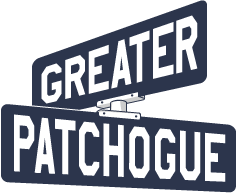by Lindsay Ries
You have probably seen a bat, flying swiftly across the sky at dusk.
But have you ever heard a bat before?
If you are lucky you may have heard the whispered “clicks” of these night flyers but for the most part bats go unheard. In fact, if we were able to hear their constant echolocation calls – used for navigation and foraging – we would have trouble falling asleep at night.
Bats can fly in complete darkness – cutting close corners in habitats like Fire Island National Seashore’s Sunken Forest and moving in and around houses in Fire Island communities – because these animals use echolocation.
Echolocation is the use of sound as a form of navigation. While they’re flying bats continuously emit ultrasonic echolocation calls (in frequencies ranging from 20 kHz to well over 100 kHz) out into their environment and listen to the echoes of those calls that return from objects near them. They use these echoes to locate and identify objects, whether it’s something to avoid and fly around or something to eat, such as a grub moth.
The National Park Service (NPS) is using echolocation calls to monitor bat activity at Fire Island National Seashore and to detect the presence of various bat species. “Bat detectors” record ultrasonic bat calls from sunset to sunrise and are placed in potential bat habitats, like forested trails, fields, freshwater sources and other areas.
The need to understand bats has never been greater. White-Nose Syndrome (WNS) is an emerging disease that has killed more than 6 million bats since it was discovered in 2007, reducing regional populations of some bat species by more than 90 percent. Understanding native bats and how they use habitats at Fire Island National Seashore is critical. The detailed information the NPS is collecting on these fascinating creatures will help us protect them.
We may not realize that we miss the subtle sounds of these secret night flyers, but we would certainly miss the valuable ecosystem services they provide, such as pest control (mosquitoes) and pollination.
Learn more and celebrate these fascinating creatures during the following Bat Week events:
National Bat Week Celebration
Central Park Zoo
Thursday, October 27, Noon to 4:00 pm
Creatures of the Night Program
Wilderness Visitor Center, Fire Island National Seashore
Friday, October 28, 5:30 to 7:00 pm
Halloween Happenings
Patchogue-Medford Library
Monday, October 31, 3:00 to 6:00 pm
For more information please visit nps.gov/FIIS.
Pictured above is a red bat held by Lindsay Ries.
Ries is a Fire Island National Seashore wildlife biologist.
























